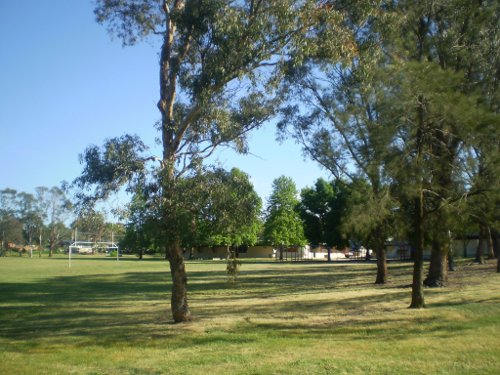Once Flynn primary school was closed in 2006, there was always the question of what would happen with the building and grounds. Would they be sold off for development, or used for the benefit of a community that had lost everything but a part-time preschool?
Significant concerns that emerged during 2006 were that closing the school could put at risk:
- community use of the building and grounds
- the heritage of the place because of its association with Enrico Tagelitti and the long-standing association with John Flynn and the Royal Flying Doctor Service
- the public use of the grounds, which were the only maintained, flat open space in Flynn.
The Flynn community’s response was to form the John Flynn Community Group to prepare a proposal for community use of the school building and grounds. The Flynn P&C appeal against the school’s closure ran at the same time.
Unfortunately, the ACT Government’s response was to start the now-infamous ‘Purdons Process’, a community ‘consultation’ that was to help the government decide what to do with the 23 closed schools. It became clear very quickly that sale and redevelopment was on the agenda, if for no other reason than ‘financial returns’ to government being in the terms of reference. This was something many in the community had suspected since closures were announced in 2006. [1]
In Flynn, the John Flynn Community Group, the Flynn P&C and Neighbourhood Watch all came together to express the community’s preference for keep the school (building and grounds) for community use, rather than having it sold off for infill development (most likely housing or aged care). Regardless, the requirement to give the government a financial return from the sites led to Purdons recommending that the government should demolish most closed schools, including Flynn, and develop them for housing or aged care. Because this report was released only months away from an election, the government shelved it and started a second consultation process, which recommended keeping most closed schools for community use.
Flynn was excluded from that second consultation process, which left open the real possibility of the Purdons recommendation for land sales, demolition and medium-density housing at Flynn. The government was still investigating this option in late 2009, while saying publicly that they could not make a decision about the future use of Flynn until its heritage status was decided.
It was only a promise by Chief Minister Jon Stanhope in late 2009 to protect the school building and grounds [2] that secured the site’s future. Even then, some public servants still tried to pressure the John Flynn Community Group into accepting (on behalf of the Flynn community) partial demolition of the building and loss of the grounds. All such efforts were abandoned after the Chief Minister received a letter about it all in late December 2009.
The department still seems to need reminding of the Chief Minister’s commitment from time to time.
During this entire period (from 2007 to 2009), the John Flynn Community Group wrote to various government ministers to ask that the school be used for the community. On legal advice, the Flynn P&C also instructed their solicitor in mid-2007 to approach the government to discuss the possibility, but the government would not discuss any option for use of the school in any forum. Despite this well-documented history, the ACT Government has attempted to blame the John Flynn Community Group for the school being left vacant from December 2006 to January 2012, when a childcare centre was relocated from nearby suburbs. Both the Chief Minister and the current responsible minister have made accusations to this effect in the Assembly. However, both claims have been refuted.



